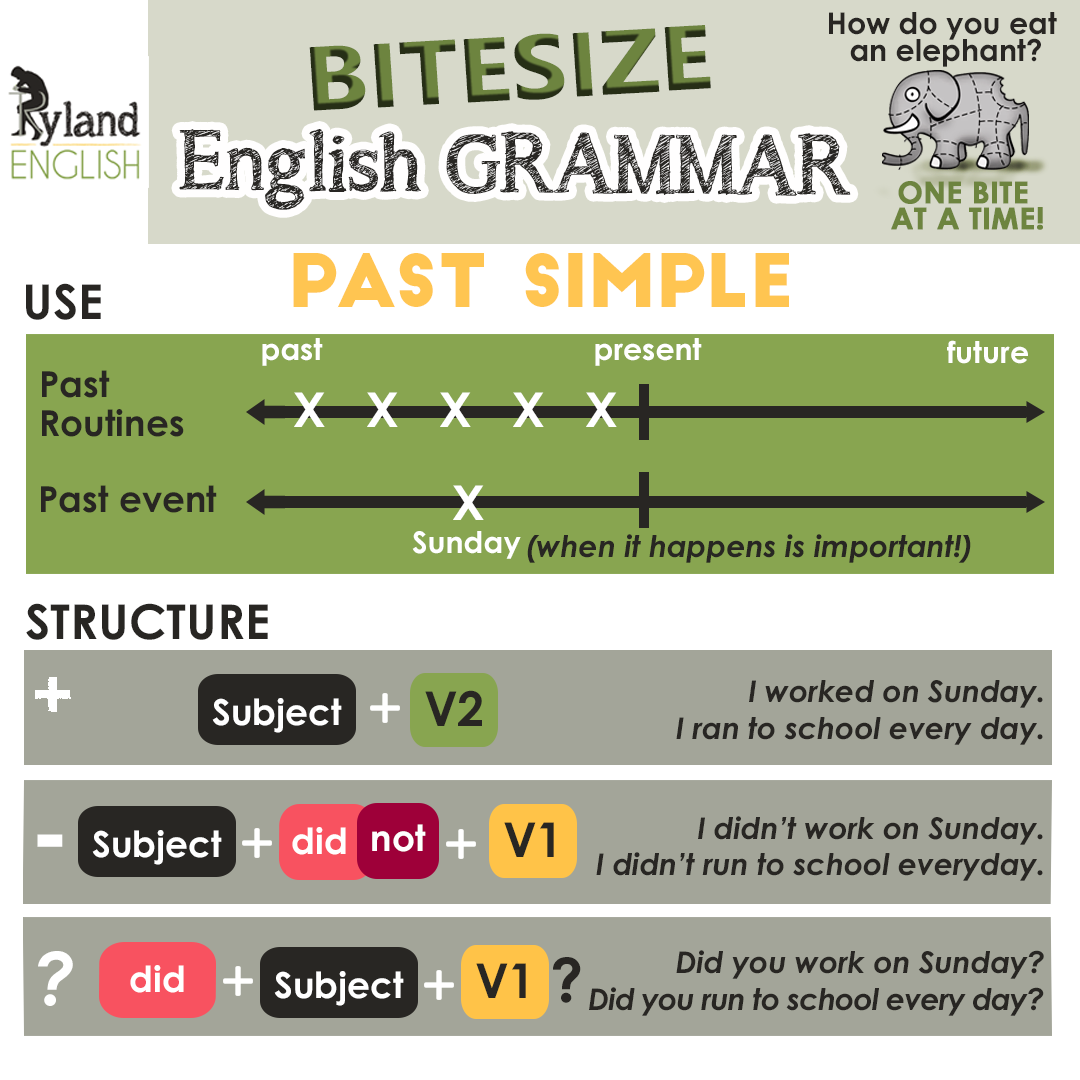
Verb tenses… hmmm… the least exciting of all grammar topics. At least to me!!
So let’s try and make it a bit more interesting by exploring ways to use it in context.
In real life, English native speakers do not consider what tense they need to use, they just know!
To help you remember we will explore when and how to use them… Ready?
You have already come across this tense if you have been following our bite-sized grammar lessons… remember? The PAST SIMPLE is also known as the V2!!
It is the past tense we use most often to talk about the past, but especially for events that started and finished in the past. It is often used with time references like ‘yesterday‘, ‘two weeks ago’, etc.
How to use the PAST SIMPLE to talk about the PAST…
To talk about something that happened once in the past.
I met my husband at work.
Last year I went to France on holiday.
He arrived very late last night.
To talk about things that happened several times in the past, or happened one after the other.
When I was young, I cycled to school every day.
We went out every night while on holiday.
First I got up, then I made lunch and packed it.
To talk about things that were true for some time, but no longer are.
I lived in London for 5 years.
He played football a lot back then.
We enjoyed listening to the birds when we lived there.
To talk about one action interrupting another when used together with the Past Continuous.
She was making the bed when the telephone rang.
It started to rain while they were playing football.
HOW TO PUT IT TOGETHER TO MAKE SENTENCES?
In regular verbs, the PAST SIMPLE is basically made by adding -ed to the base form of the verb [V1], which magically makes it into the V2 form! The irregular verbs, on the other hand, are a little more complicated, so I am afraid you will have to learn them by heart! 😅
Affirmative sentences
For sentences that are ‘positive‘ or affirmative, you can just use the base form and add an ‘-ed’ at the end for regular forms, which is the V2 form. Irregular verbs have different spellings so you will have to learn them!

Negative sentences
Warning! ‘did’ is used for all subjects, including the 3rd person [he, she, it].
She didn’t check her ticket.
He didn’t sleep in his bed last night.
It didn’t matter at the time.
For sentences that are ‘negative‘ you use the base form [V1], but you have to add the auxiliary verb ‘to do’ in the past form, ‘did’, as well as ‘not’ before it.

Remember;
‘did not’ = ‘didn’t’
Questions
For questions you also use the base form and the auxiliary verb ‘to do’ in the past form, ‘did’, but you must swap it with the person/entity responsible for the action [the subject].

To make a negative question simply add a ‘not’ to ‘did’.
Didn’t you work on Sunday?
TOP TIPS!!!
The -ed form of a verb has 3 possible pronunciations! Go to our Pronunciation Tools post if you want to test it out! Here you have some examples that you can test the tools with.
/d/
arrived
failed
agreed
/t/
asked
crossed
stopped
/ɪd/
wanted
decided
started
The auxiliary ‘did’ is not normally used in affirmative sentences but it can be used in a sentence to add emphasis and give importance to what is being said. However, if it is added the main verb must be in base form.
Also you must give them extra stress during pronunciation.
She thinks I didn’t love her, but I did love her. I really did!
I don’t see my old friends often, but I do call them every now and then.
